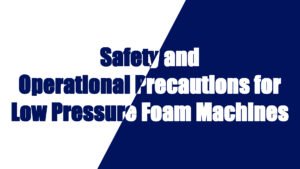In the medical industry, materials must meet stringent performance, safety, and regulatory standards. Polyurethane (PU) is commonly used due to its versatility, durability, and biocompatibility. However, it must be compared with other materials to determine its advantages and disadvantages in specific medical applications. Below is a detailed comparison of Polyurethane vs. Other Materials (e.g., Silicone, PVC, Rubber, and Polyethylene) used in the medical field.
Materials Comparison Table:
| Property | Polyurethane (PU) | Silicone | PVC (Polyvinyl Chloride) | Rubber (Latex) | Polyethylene (PE) |
|---|---|---|---|---|---|
| Density (g/cm³) | 1.1 – 1.3 | 1.1 – 1.2 | 1.3 – 1.4 | 0.92 – 1.0 | 0.91 – 0.96 |
| Tensile Strength (MPa) | 40 – 50 | 7 – 20 | 40 – 60 | 15 – 30 | 15 – 40 |
| Elongation at Break (%) | 500 – 800% | 100 – 300% | 150 – 400% | 500 – 700% | 300 – 800% |
| Hardness (Shore A) | 20 – 90 | 20 – 80 | 60 – 80 | 30 – 60 | 45 – 70 |
| Biocompatibility | High, meets FDA, ISO 10993 | Excellent, meets FDA, ISO 10993 | Moderate, requires plasticizers | Moderate, allergenic potential | Good, non-toxic, meets FDA |
| Durability | Excellent, wear-resistant | Very good, tear-resistant | Moderate, may degrade with exposure to UV and heat | Moderate, can degrade and cause allergies | Good, resistant to wear and tear |
| Temperature Resistance | -40°C to 80°C | -50°C to 200°C | -20°C to 60°C | -20°C to 100°C | -50°C to 80°C |
| Chemical Resistance | Excellent, resistant to oils, solvents | Excellent, highly resistant to chemicals | Poor to moderate, can degrade with chemicals | Poor, can degrade with exposure to chemicals | Good, resistant to many chemicals |
| Flexibility | High, offers great flexibility | Very high, remains flexible at low temperatures | Moderate, less flexible than PU | Moderate, stiffens in cold temperatures | Moderate, flexible under normal conditions |
| Transparency | Transparent or opaque | Opaque or transparent | Transparent, available in various colors | Opaque or transparent | Transparent |
| Processing | Injection molding, extrusion, casting | Injection molding, extrusion | Injection molding, extrusion | Molding, latex dipping | Extrusion, blow molding |
| Cost | Moderate to high | High | Low to moderate | Low to moderate | Moderate |
| Applications in Medicine | Catheters, wound dressings, prosthetics, IV bags | Implants, baby products, catheters, medical seals | IV bags, tubing, blood bags, medical gloves | Surgical gloves, catheters, medical tubing | Surgical wraps, prosthetics, packaging |
Detailed Analysis:
Polyurethane (PU):
- Advantages:
- High Durability: Polyurethane offers excellent wear resistance, tear resistance, and elongation at break (500-800%), making it suitable for long-term use in the body (e.g., catheters, prosthetics).
- Versatility: Can be processed into various forms, including foams, films, and elastomers, enabling a wide range of medical applications such as wound dressings, IV bags, and prosthetics.
- Biocompatibility: Meets stringent biocompatibility standards (FDA, ISO 10993), ensuring it is safe for use in the human body.
- Chemical Resistance: Excellent resistance to oils, solvents, and bodily fluids, making it ideal for medical devices exposed to harsh environments.
- Disadvantages:
- Cost: PU is more expensive than materials like PVC and rubber, which may limit its use in cost-sensitive applications.
- Temperature Limitations: While PU can withstand a wide range of temperatures (-40°C to 80°C), it is not as resistant to high temperatures as silicone.
Silicone:
- Advantages:
- Excellent Biocompatibility: Silicone is known for its exceptional biocompatibility, making it ideal for implantable devices, prosthetics, and baby products.
- Temperature Resistance: Silicone performs well in a wide temperature range (-50°C to 200°C), making it suitable for applications in both high- and low-temperature environments.
- Flexibility and Softness: It maintains flexibility even at low temperatures, and is ideal for applications like medical seals and flexible tubing.
- Disadvantages:
- Higher Cost: Silicone tends to be more expensive than materials like PU and PVC, limiting its use in applications where cost is a concern.
- Lower Tensile Strength: The tensile strength of silicone is lower compared to PU and PVC, which limits its use in applications that require high mechanical strength.
PVC (Polyvinyl Chloride):
- Advantages:
- Low Cost: PVC is one of the most affordable materials, making it a popular choice for disposable medical devices such as IV bags, tubing, and blood bags.
- Transparency: PVC can be made transparent, allowing for visual monitoring of fluids in medical devices such as catheters and IV tubes.
- Chemical Resistance: PVC has good resistance to many chemicals and bodily fluids, although it is more vulnerable to degradation with UV exposure.
- Disadvantages:
- Biocompatibility: PVC may contain plasticizers, which can leach out and affect the biocompatibility of the material, particularly in long-term use.
- Durability: While PVC is resistant to some chemicals, it is less durable than PU and silicone, particularly under conditions of heat and UV exposure.
Rubber (Latex):
- Advantages:
- Elasticity and Flexibility: Latex rubber is highly elastic and flexible, making it ideal for medical gloves, catheters, and tubing.
- Cost-Effective: Latex is relatively inexpensive compared to silicone and PU, making it a common material for disposable medical products.
- Disadvantages:
- Allergic Reactions: One of the major drawbacks of latex is the potential for allergic reactions in some patients, which has led to the increased use of non-latex alternatives in medical settings.
- Degradation: Latex can degrade when exposed to chemicals, oils, and UV light, limiting its lifespan in certain medical applications.
Polyethylene (PE):
- Advantages:
- Cost-Effective: Polyethylene is one of the most affordable materials, making it suitable for large-scale, disposable medical products such as surgical wraps, packaging, and prosthetics.
- Good Chemical Resistance: PE is resistant to many chemicals, including acids and bases, and can withstand harsh environments.
- Disadvantages:
- Lower Durability: Polyethylene is less durable compared to PU and silicone, and may wear out more quickly under heavy mechanical stress.
- Limited Temperature Resistance: Although it has a good range of temperatures (-50°C to 80°C), PE does not perform as well as silicone in extreme environments.
Summary:
Polyurethane (PU) is a versatile, durable, and biocompatible material ideal for high-stress, long-term medical applications such as catheters, prosthetics, и wound dressings. Its high chemical resistance и flexibility make it a great choice, but it comes with a higher cost.
Silicone excels in biocompatibility и temperature resistance (up to 200°C), making it suitable for implantable devices и baby products. It is more expensive than PU, but its soft, flexible nature makes it invaluable in applications requiring low-temperature performance.
PVC is an inexpensive material commonly used for IV bags, tubing, и blood bags. While it has good chemical resistance and can be transparent, its biocompatibility и durability are lower compared to PU and silicone. It is also more prone to degradation from UV exposure.
Rubber (Latex) offers excellent elasticity и flexibility at a low cost, but concerns regarding latex allergies and its susceptibility to chemical degradation have limited its use in certain medical applications.
Polyethylene (PE) is widely used for disposable items like surgical wraps и упаковка. While it is affordable and resistant to chemicals, it lacks the durability and high-temperature resistance of PU and silicone.
Conclusion:
- For biocompatibility и high-performance applications (e.g., implants, catheters), Silicone и Polyurethane are the best choices due to their superior biocompatibility and flexibility.
- For cost-sensitive applications like disposable tubing и blood bags, PVC и Polyethylene are more cost-effective alternatives but may compromise on durability and biocompatibility.
- Rubber (Latex) remains suitable for applications requiring high elasticity, but its use is declining due to allergy concerns.
When choosing a material for medical applications, Polyurethane stands out as a balanced option for durability, flexibility, biocompatibility, and chemical resistance, making it a preferred choice for many critical medical devices.
Last Blog: News of Polyurethane and Insulation Industry



































